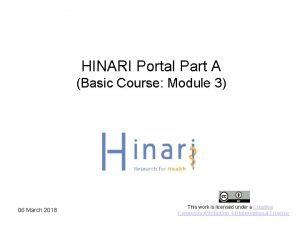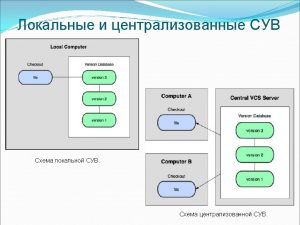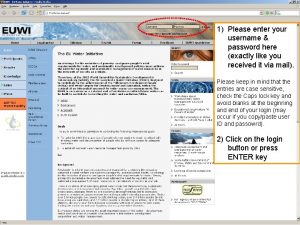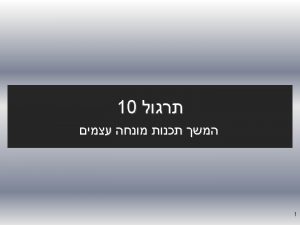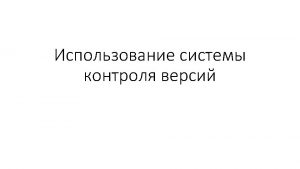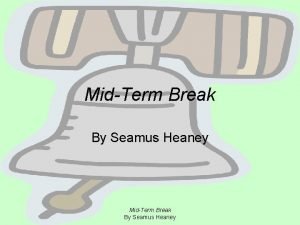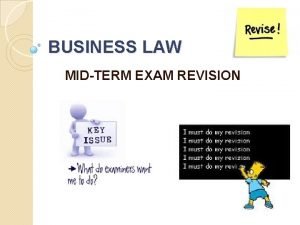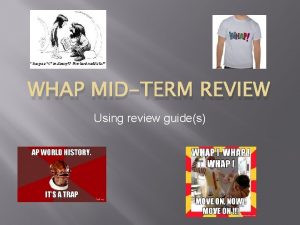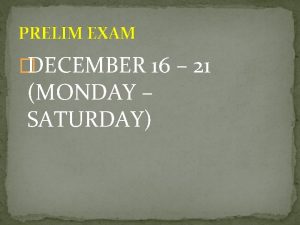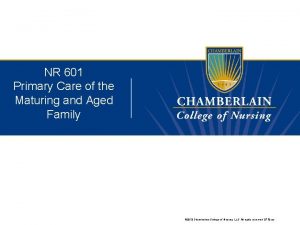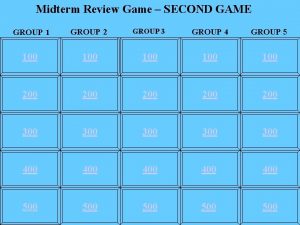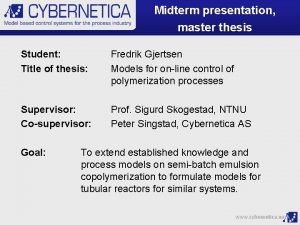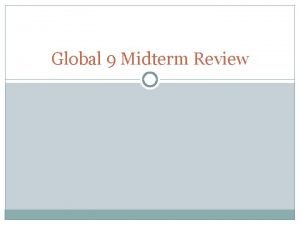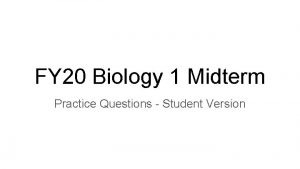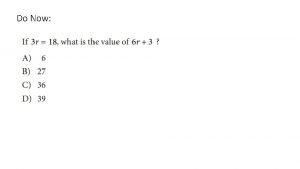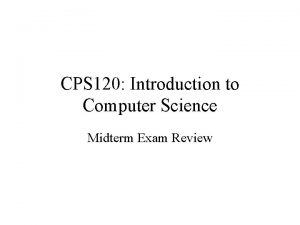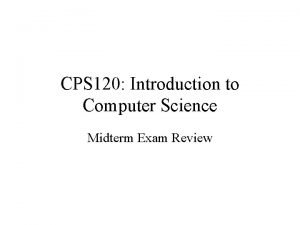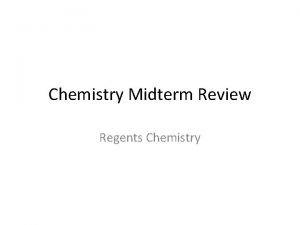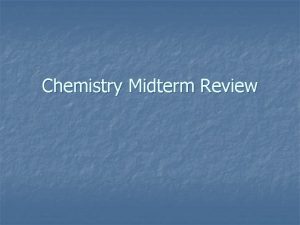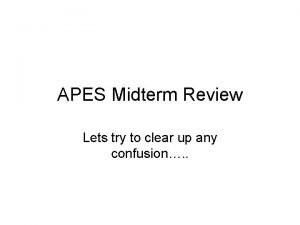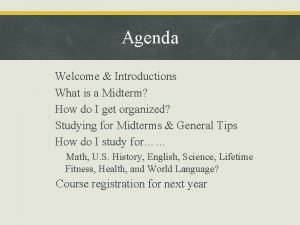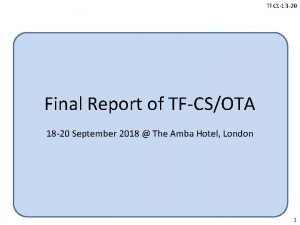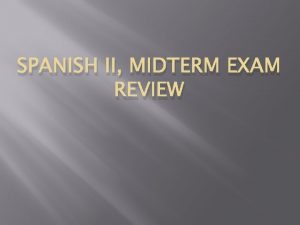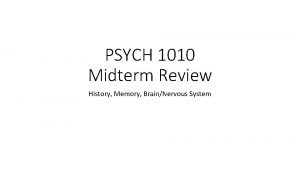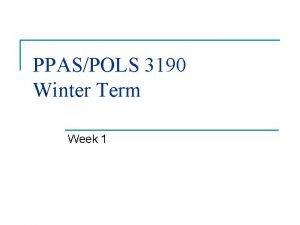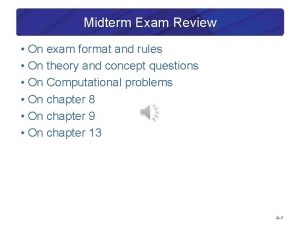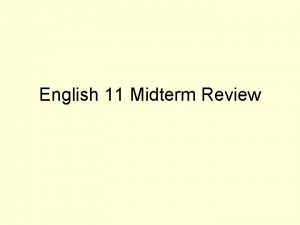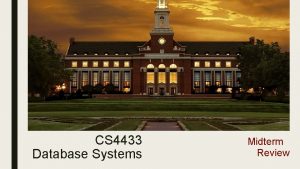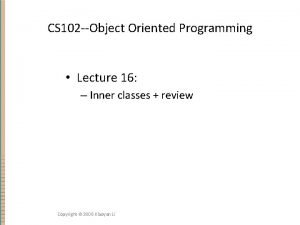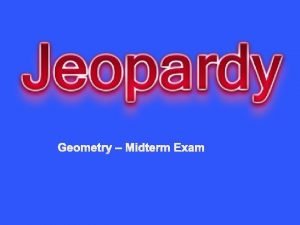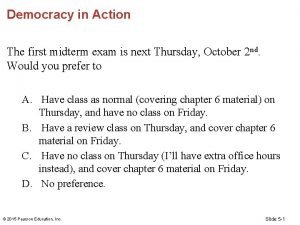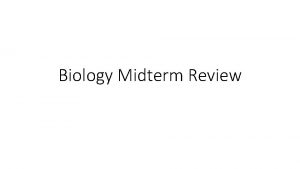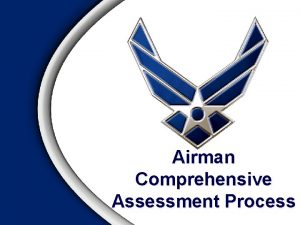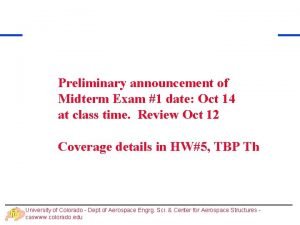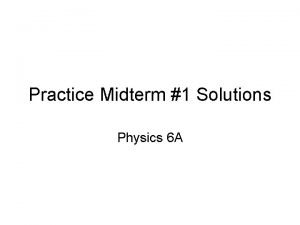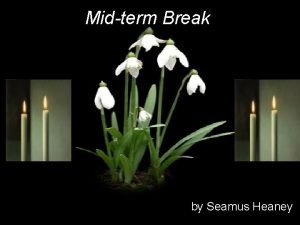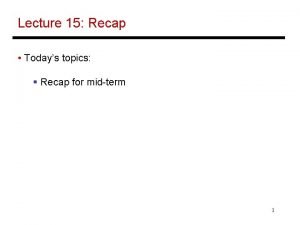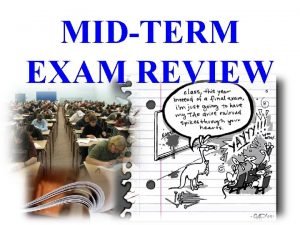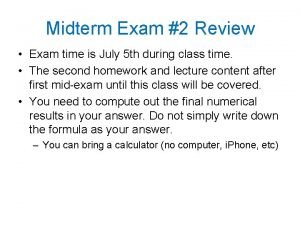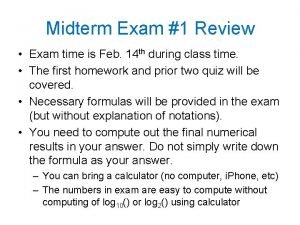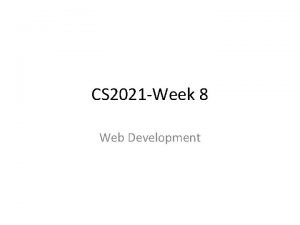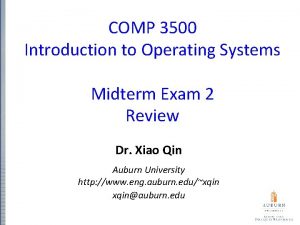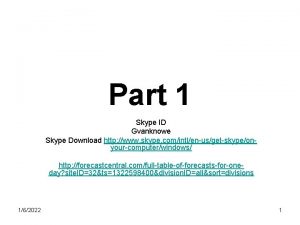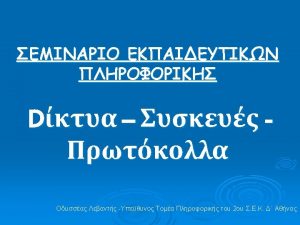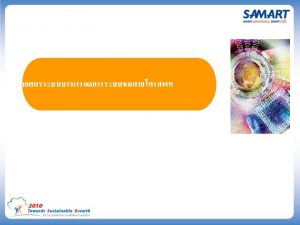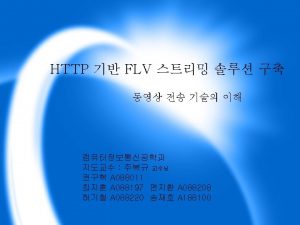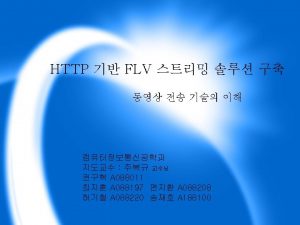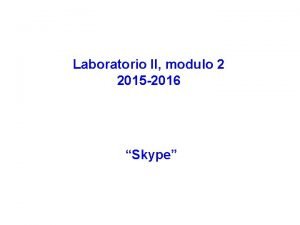Download skype Skype username yeditepeanatomy SKYPE ANATOMY MIDTERM


















![Facial Bones (n=14] 19 Facial Bones (n=14] 19](https://slidetodoc.com/presentation_image_h2/45e247ed5ff3b5b1a163b3c309a2572f/image-19.jpg)


































































- Slides: 85

Download skype Skype username: yeditepeanatomy SKYPE ANATOMY MIDTERM NOTES Kaan Yücel M. D. , Ph. D. 28. 3. 2013 Thursday 2000 -2130 English session 2130 -2300 Turkish session

TYPES OF ANATOMY 1) REGIONAL ANATOMY Topographical anatomy system ANATOMY Lympathic 2)Skeletal SYSTEMATIC system Joints Nervous system Muscular System Cardiovascular System 3) Clinical anatomy Applied anatomy 2

The anatomical position refers to the body position as if the person were standing upright with the: Ø Head, eyes, and toes directed anteriorly (forward) Ø Arms adjacent to the sides with the palms facing anteriorly Ø Lower limbs close together with the feet parallel. 3




Terms of movement may also be considered in pairs of oppositing movements: Flexion and extension movements generally occur in sagittal planes around a transverse axis.

abduction & adduction @ a frontal plane around an anteroposterior axis Abduction moving away from the median plane except digits Adduction moving towards the median plane

The skeletal system may be divided into 2 functional parts: The axial skeleton • head (cranium or skull) • neck (hyoid bone and cervical vertebrae) • trunk (ribs, sternum, vertebrae, and sacrum) The appendicular skeleton • Limbs including those forming the shoulde & pelvic girdles 9

sparse cells surrounded by an extracellular network/matrix 60% the weight of the bone mineral Rest - water & matrix. 90% of the matrix proteins collagen 1/3 of the bone weight very strong forms bone, cartilage, skin, and tendons 10

The skeleton is composed of cartilages and bones. Cartilage resilient, semirigid form of connective tissue forms parts of the skeleton where more flexibility is required. articulating of bones participating in a synovial joint capped with articular cartilage provides smooth, low-friction, gliding surfaces for free movement 11

Types of cartilage 1. Hyaline most common, matrix w/ moderate amount of collagen fibers articular surfaces of bones 2. Elastic large number of elastic fibers external ear 3. Fibrocartilage limited number of cells & ground substance amidst substantial amount of collagen fibers intervertebral discs 12

Bones function as supportive structures for the body protectors of vital organs reservoirs of calcium and phosphorus levers on which muscles act to produce movement containers for blood-producing cells 13

TYPES OF BONES according to their shape gross anatomy 1) Long bones 2) Short bones tubular humerus in the arm cuboidal tarsus (ankle) carpus (wrist) 3) Flat bones 4) Irregular bones protective functions shapes other than long, flat bones of the cranium protectvarious the brain short, or flat bones of the face 14

5) Sesamoid bones patella or knee cap protect the tendons from excessive wear often change the angle of the tendons as they pass to their attachments. 15

2 types of bones according to histological features compact bone & spongy (trabecular) bone Spongy bone found @ expanded heads of long bones + fills most irregular bones. Compact bone forms outer shell of all bones + shafts in long bones. 16

SKULL BONES 8 bones of neurocranium 17

Cranial Fossae Anterior cranial fossa occupied by the inferior and anterior parts of the frontal lobes of the brain shallowest cranial fossa Middle cranial fossa butterfly-shaped central part composed of the sella turcica on the body of the sphenoid large, depressed lateral parts on each side Posterior cranial fossa largest and deepest cranial fossa formed mostly by the occipital bone 18
![Facial Bones n14 19 Facial Bones (n=14] 19](https://slidetodoc.com/presentation_image_h2/45e247ed5ff3b5b1a163b3c309a2572f/image-19.jpg)
Facial Bones (n=14] 19

Ribs (L. costae) curved flat bones form most of the thoracic cage. 3 types of ribs: q True (vertebrocostal) ribs (1 st-7 th ribs): directly to the sternum. q False (vertebrochondral) ribs (8 th, 9 th, and usually 10 th ribs): indirect with the sternum q Floating (vertebral, free) ribs (11 th, 12 th, and sometimes 10 th ribs): No connection with the sternum 20

STERNUM G. sternon, chest Has three parts: 1. Manubrium 2. Body 3. Xiphoid process 21

VERTEBRAL COLUMN Ø In an adult typically consists of 33 vertebrae arranged in five regions: 7 cervical, 12 thoracic, 5 lumbar, 5 sacral, and 4 coccygeal. vertebral body vertebral arch seven processes 22

CLAVICLE (TR. KÖPRÜCÜK KEMİĞİ) Ø Its medial half articulates with the manubrium of the sternum. Ø Its lateral half articulates with the scapula. Ø These curvatures increase the resilience of the clavicle and give it the appearance of an elongated capital S. 23

Scapula (Tr. Kürek kemiği) The scapula (shoulder blade) is a triangular flat bone that lies on the posterolateral aspect of the thorax. The scapula has an articular surface; a glenoid cavity (G. socket) for the articulation with the head of the humerus. 24

HUMERUS Ø largest bone in the upper limb Ø articulates with the scapula at the glenohumeral joint Ø articulates with the radius and ulna at the elbow joint. Ø The proximal end of the humerus has a head, head surgical and anatomical necks, necks and greater and lesser tubercles 25

ULNA stabilizing bone of the forearm medial and longer of the two forearm bones. Its more massive proximal end is specialized for articulation with the humerus proximally and the head of the radius laterally. 26

RADIUS lateral and shorter of the two forearm bones. Its proximal end includes a short head, head neck Proximally, the head of the radius is concave for articulation with the humerus during flexion and extension of the elbow joint. The head also articulates with the ulna. The shaft of the radius, in contrast to that of the ulna, gradually enlarges as it passes distally. 27

Ø The metacarpus forms the skeleton of the palm of the hand between the carpus and the phalanges. Ø It is composed of five metacarpal bones (metacarpals). Ø The proximal bases of the metacarpals articulate with the carpal bones, and the distal heads of the metacarpals articulate with the proximal phalanges and form the knuckles. 28

The skeleton of the lower limb (inferior appendicular skeleton) may be divided into two functional components: 1. pelvic girdle 2. bones of the free lower limb. 29

In the mature individual, the pelvic girdle is formed by three bones: Right and left hip bones (coxal bones; pelvic bones): large, irregularly shaped bones, each of which develops from the fusion of three bones, the ilium, ilium ischium, ischium and pubis 30

TIBIA (SHINE BONE) on the anteromedial side of the leg, nearly parallel to the fibula second largest bone anterior border of the tibia -most prominent border. tibia & adjacent medial surface subcutaneous throughout their lengths commonly known as the “shin” periosteal covering and overlying skin vulnerable to bruising. 31

FIBULA posterolateral to the tibia slender tibiofibular syndesmosis no function in weight-bearing serves mainly for muscle attachment. distal end enlarges prolonged as lateral malleolus proximal end an enlarged head superior to a small neck. 32

PATELLA (KNEE CAP) largest sesamoid bone in the body embedded in the quadriceps femoris tendon. joint between the patella and femur share the same articular cavity w/ the joint between femur & tibia patellar ligament connects the patella to the tibia. 33

BONES OF THE FOOT Tarsus (7 bones) Metatarsus (5 bones) Phalanges (14 phalanges) 34

Classification of Joints according to the tissues that lie between the bones: 1) Fibrous joints Syndesmosis type of fibrous joint 2) Cartilaginous joints 3) Synovial joints

Types of synovial joints according to shape of articulating surfaces- type of movement they permit 1. Plane joints uniaxial joints- gliding or sliding acromioclavicular joint 2. Hinge joints uniaxial joints- flexion & extension knee & elbow joints

Types of synovial joints 3. Saddle joints biaxial joints- flexion & extension, abduction & adduction carpometacarpal joint at the base of the 1 st digit (thumb) 4. Condyloid (ellipsoid type) biaxial joints- flexion & extension, abduction & adduction metacarpophalangeal joints (knuckle joints) radiocarpal joint (wrist)

Types of synovial joints 5. Ball and socket joints (spheroidal joints) multiple axes and planes: flexion and extension, abduction and adduction, medial and lateral rotation, and circumduction hip & shoulder joints

Types of synovial joints 6. Pivot joints uniaxial joints- rotation around a central axis proximal & distal radioulnar joints

TEMPOROMANDIBULAR JOINT mandibular fossa & articular tubercle of temporal bone head of the mandible articular disc of the TMJ

JOINTS OF THE VERTEBRAL COLUMN The vertebral column in an adult typically consists of 33 vertebrae arranged in five regions: 7 cervical, 12 thoracic, 5 lumbar, 5 sacral, and 4 coccygeal. Joints of the vertebral bodies symphyses (secondary cartilaginous joints) Joints of the vertebral arches (facet joints) Craniovertebral (atlanto-axial and atlanto-occipital) joints Costovertebral joints Sacroiliac joints

JOINTS OF THE UPPER LIMB Sternoclavicular joint (SC) sternal end of the clavicle articulates with manubrium & 1 st costal cartilage The only articulation between upper limb & axial skeleton. During full elevation of the limb, clavicle is raised to 60° angle.

Glenohumeral (shoulder) joint permits a wide range of movement; mobility makes the joint relatively unstable. Humeral head articulates w/ glenoid cavity of the scapula deepened slightly but effectively by the ring-like, fibrocartilaginous glenoid labrum (L. , lip).

Glenohumeral (shoulder) joint more freedom of movement than any other joint in the body results from the laxity of its joint capsule & large size of the humeral head compared with the small size of the glenoid cavity. movements around three axes flexion-extension, abduction-adduction, rotation (medial and lateral) of the humerus, circumduction

Elbow Joint located inferior to the epicondyles of the humerus humeroulnar & humeroradial articulations

Proximal (superior) radio-ulnar joint allows movement of the head of the radius on the ulna Radial head is held in position by the anular ligament of the radius. Distal (inferior) radio-ulnar joint The radius moves around the relatively fixed distal end of the ulna.

Wrist (radiocarpal) joint ulna does not participate in the wrist joint. Distal end of the radius & articular disc of the distal radio-ulnar joint articulate with proximal row of carpal bones, except for the pisiform. Flexion Extension Abduction Adduction radial deviation-ulnar deviation Circumduction

JOINTS OF THE LOWER LIMB articulations of the pelvic girdle lumbosacral joints, sacroiliac joints, and pubic symphysis hip joints knee joints tibiofibular joints ankle joints foot joints

JOINTS OF THE PELVIS Pubic symphysis interpubic disc & surrounding ligaments unite the bodies of the pubic bones in the median plane. Lumbosacral joints L 5 and S 1 vertebrae articulate Sacrococcygeal joint

Types of Muscles based on distinct characteristics Functional voluntary vs. involuntary Histological striated vs. smooth or unstriated Anatomical (location) @ body wall (soma) and limbs @ hollow organs (viscera) or blood vessels

FEATURES OF SKELETAL MUSCLES HEAD OR BELLY fleshy, reddish, contractile portions TENDON white non-contractile portions composed mainly of organized collagen bundles, that provide a means of attachment.

Many terms provide information about a structure's Shape Size Location Function Resemblance of one structure to another

CLASSIFICATION OF MUSCLES according to their shapes Flat muscles parallel fibers often with an aponeurosis Pennate muscles feather-like (L. pennatus, feather), arrangement of fasicles Fusiform muscles spindle shaped with a round, thick belly (or bellies) and tapered ends Convergent muscles Quadrate muscles Circular or sphincteral muscles

Multi-headed or multi-bellied muscles more than one head of attachment or more than one contractile belly Biceps muscles two heads of attachment triceps muscles three heads Two bellies digastric muscle gastrocnemius muscle

CONTRACTION OF MUSCLES Skeletal muscles function by contracting they pull and never push. When a muscle contracts and shortens one of its attachments usually remains fixed the other attachment (more mobile) pulled toward it movement

Functions of muscles Prime mover (agonist) main muscle responsible for producing a specific movement of the body. Fixator steadies the proximal parts of a limb through isometric contraction while movements are occurring in distal parts. Synergist complements the action of a prime mover. Usual to have several synergists assisting a prime mover in a particular movement

Antagonist a muscle that opposes the action of another muscle. A primary antagonist directly opposes the prime mover, synergists may also be opposed by secondary antagonists. The same muscle may act as a prime mover, antagonist, synergist, or fixator under different conditions.

Muscles of the Face and the Scalp The facial muscles (muscles of facial expression) move the skin and change facial expressions to convey mood. Most muscles attach to bone or fascia and produce their effects by pulling the skin.

Cutaneous (sensory) innervation of the face and anterosuperior part of the scalp is provided primarily by the trigeminal nerve (CN V). Motor innervation to the facial muscles is provided by the facial nerve (CN VII).

MUSCLES OF THE NECK Sternocleidomastoid (SCM) muscle broad, strap-like muscle with two heads One head attaches to the sternum One head attaches to clavicle. Bilateral contractions extension of the elevating the chin Unilateral contraction laterally flexes the neck

Trapezius muscle large, flat triangular muscle Covers the posterior aspect of the neck & superior half of the trunk A direct attachment of the pectoral girdle to the trunk. A ssists in suspending the upper limb.

MUSCLES OF THE PECTORAL & SCAPULAR REGIONS 4 anterior axioappendicular muscles (pectoral muscles) move the pectoral girdle. Pectoralis major is the biggest of these four. powerful adduction and medial rotation of the arm

Posterior shoulder muscles Superficial extrinsic shoulder muscles trapezius and latissimus dorsi Deep extrinsic shoulder muscles two muscles Intrinsic shoulder muscles deltoid, teres major, four rotator cuff muscles

latissimus dorsi (L. widest of back) passes from the trunk to the humerus and acts directly on the shoulder joint and indirectly on the pectoral girdle. extends, retracts, and rotates the humerus medially when folding the arms behind the back or scratching the skin over the opposite scapula

Muscles of the Arm & the Hand Of the four major arm muscles: three flexors (biceps brachii, brachialis, and coracobrachialis) in the anterior (flexor) compartment supplied by the musculocutaneous nerve one extensor (triceps brachii) in the posterior compartment, supplied by the radial nerve.

flexor muscles of the forearm anterior (flexor-pronator) compartment of the forearm extensor muscles of the forearm posterior (extensor-supinator) compartment of the forearm

Muscles of the Gluteal Region, Back, Leg & the Foot gluteus maximus largest, heaviest, and most coarsely fibered muscle of the body. most superficial gluteal muscle extension and lateral rotation of the thigh

anterior thigh muscles flexors of the hip and extensors of the knee. sartorius, sartorius the “tailor's muscle” longest muscle in the body. quadriceps femoris (L. , four-headed femoral muscle) It covers almost all the anterior aspect and sides of the femur. extensor of the leg. The posterior thigh muscles include the hamstring muscles: (1) semitendinosus, (2) semimembranosus, and (3) biceps femoris (long head).

Four muscles in the anterior compartment of the leg dorsiflexors of the ankle joint, elevating the forefoot and depressing the heel lateral compartment of the leg smallest (narrowest) of the leg compartments fibularis longus and brevis muscles Evertors of the foot Posterior compartment of the leg plantarflexor compartment is largest of the three leg compartments inversion of the foot superficial group of calf muscles gastrocnemius, soleus, and

6 abdominal muscles transverse abdominal internal obliques external obliques rectus abdominis

1. REGIONS/T ERMS Thoracic cavity between neck and abdomen protected by the thoracic wall. Thoracic wall bounds the thoracic cavity. formed by the skin, bones, fasciae, and muscles. Thoracic cage bony portion of the thoracic wall thoracic skeleton

1. 3. BOUNDARIES OF THE THORAX Superior • • • Jugular notch Sternoclavicular joint Superior border of clavicle Acromion Spinous processes of C 7 Inferior • • Xiphoid process Costal arch 12 th and 11 th ribs Vertebra T 12

2. 1. FUNCTIONS OF THE THORACIC WALL 1) Protects vital thoracic and abdominal organs 2) Resists the negative (sub-atmospheric) internal pressures generated by the elastic recoil of the lungs and inspiratory movements. 3) Provides attachment for and support the weight of the upper limbs. 4) Provides the origins of many of the muscles that move and maintain the position of the upper limbs relative to the trunk. 5) Provides attachments for muscles of the abdomen, neck, back, and respiration.

3. SKELETON OF THE THORACIC WALL 1) 12 pairs of ribs and associated costal cartilages 2) 12 thoracic vertebrae and the intervertebral (IV) discs interposed between them 3) Sternum

4. 1. Superior thoracic aperture “doorway” between the thoracic cavity and the neck and upper limb bounded: Posteriorly vertebra T 1 Laterally 1 st pair of ribs and their costal cartilages Anteriorly superior border of the manubrium q Trachea q Esophagus q nerves, and vessels that supply and drain the head, neck, and upper limbs.

4. 2. Inferior thoracic aperture By closing the inferior thoracic aperture, the diaphragm separates the thoracic and abdominal cavities almost completely. bounded: Posteriorly 12 th thoracic vertebra Posterolaterally 11 th and 12 th pairs of ribs Anterolaterally joined costal cartilages of ribs 7 -10 costal margins Anteriorly xiphisternal joint

6. MUSCLES OF THE THORACIC WALL Serratus posterior Levator costarum Intercostal muscles(External, internal and innermost) Subcostal Transverse thoracic

6. 1. Accessory muscles of respiration v upper accessory muscles assist with inspiration. v upper chest, and abdominal muscles assist with expiration.

7. MOVEMENTS OF THE THORACIC WALL One of the principal functions of the thoracic wall and the diaphragm is to alter the volume of the thorax and thereby move air in and out of the lungs. During breathing, the dimensions of the thorax change in vertical, lateral, and A-P directions. Diaphragm contracts Depression Diaphragm relaxes Elevation (during passive expiration) Elevation &depression of the ribs

• Near the angles of the ribs, the nerves pass between internal intercostal & innermost intercostal muscles. V. A. N. • Neurovascular bundles sheltered by the inferior margins of the overlying rib.

10. 3. DERMATOMES Skin area supplied by a segment of the spinal cord Through its posterior ramus and the lateral and anterior cutaneous branches of its anterior ramus, most thoracic spinal nerves (T 2 -T 12) supply a strip-like dermatome of the trunk extending from the posterior median line to the anterior median line. T 2 - Sternal angle T 4 - Nipple T 6 - Xiphoid process T 8 - Costal arch T 10 -Umbliculus T 12 -Midpoint between umbilicus and symphysis pubis

11. BREASTS Mammary glands: Series of ducts and associated secretory lobules. Form 15 to 20 lactiferous ducts open nipple. Nipple is surrounded by a circular pigmented area of skin areola (L. small area).

75% (lateral breast quadrants) Axillary lymph nodes Most of the remaining (medial breast quadrants) parasternal lymph nodes or to the opposite breast Lymph from inferior quadrants may pass deeply to abdominal lymph nodes.

1. MEDIASTINUM (Interpleaural space) central compartment of the thoracic cavity Thoracic cavity is divided into 3 major spaces 1) mediastinum 2) right pulmonary cavity 3) left pulmonary cavity

Mediastinum extends from superior thoracic aperture superiorly to diaphragm inferiorly from sternum & costal cartilages anteriorly to bodies of thoracic vertebrae posteriorly
 Localhost username and password
Localhost username and password Realsoft default username and password
Realsoft default username and password Sisrute.kemenkes.go.id
Sisrute.kemenkes.go.id Username dan password sapa warga
Username dan password sapa warga Ora-12638
Ora-12638 Hinari login
Hinari login Set properties globally git
Set properties globally git Please enter username and password
Please enter username and password Public class username
Public class username Login.research4life.org password
Login.research4life.org password Ebm level of evidence
Ebm level of evidence Identified by password
Identified by password Myfiu account
Myfiu account Hinari website
Hinari website Hinari username password
Hinari username password Fs.mkdir
Fs.mkdir Git global username
Git global username Kali web vulnerability scanner
Kali web vulnerability scanner Webgoat default username and password
Webgoat default username and password Medibuddy claim tracking
Medibuddy claim tracking Nlp midterm exam
Nlp midterm exam Data mining exam
Data mining exam Features of html
Features of html Mid term test english 10
Mid term test english 10 Mid term break igcse questions
Mid term break igcse questions Business law midterm answers
Business law midterm answers Michael britt brain mnemonics
Michael britt brain mnemonics Algebra 1 midterm review
Algebra 1 midterm review Whap midterm review
Whap midterm review Eku dual credit
Eku dual credit Research methodology midterm exam
Research methodology midterm exam Prelim midterm finals grading system
Prelim midterm finals grading system Goroll primary care medicine test bank
Goroll primary care medicine test bank Ics 33 midterm
Ics 33 midterm Cows
Cows Midterm presentation
Midterm presentation Mid term break poem
Mid term break poem Global history midterm
Global history midterm Global 9 midterm review
Global 9 midterm review Biology practice midterm
Biology practice midterm English 9 midterm exam
English 9 midterm exam Trig midterm review
Trig midterm review Computer science midterm
Computer science midterm Introduction to computer science midterm exam
Introduction to computer science midterm exam Introduction to computer science midterm exam test
Introduction to computer science midterm exam test Regents chemistry midterm
Regents chemistry midterm Chemistry midterm review
Chemistry midterm review Apes midterm practice test
Apes midterm practice test Ap english language and composition midterm exam
Ap english language and composition midterm exam Ap chemistry midterm review
Ap chemistry midterm review Whats a midterm exam
Whats a midterm exam Algebra 2 midterm exam answers
Algebra 2 midterm exam answers Grva midterm exam
Grva midterm exam Spanish 2 midterm practice test
Spanish 2 midterm practice test Psychology 1010 midterm
Psychology 1010 midterm Midterm makeup
Midterm makeup Midterm exam format
Midterm exam format American literature midterm exam
American literature midterm exam World history first semester exam review
World history first semester exam review English 11 midterm exam
English 11 midterm exam Database systems midterm exam
Database systems midterm exam Cs 102 midterm
Cs 102 midterm Midterm report
Midterm report Geometry midterm exam
Geometry midterm exam Af form 931 midterm feedback example
Af form 931 midterm feedback example Exam midterm
Exam midterm Biology midterm review
Biology midterm review Computer science practice midterm
Computer science practice midterm Initial feedback form air force
Initial feedback form air force Midterm exam announcement
Midterm exam announcement Physics practice midterm
Physics practice midterm Personal finance midterm
Personal finance midterm Midterm
Midterm Midterm paper
Midterm paper Seamus heaney spring break
Seamus heaney spring break A poppy bruise
A poppy bruise Midterm
Midterm Ipc144 midterm
Ipc144 midterm Pols 1101 midterm
Pols 1101 midterm Mid term review format
Mid term review format Comp 248 midterm
Comp 248 midterm Comp 248 midterm
Comp 248 midterm Web development midterm exam
Web development midterm exam Operating systems midterm
Operating systems midterm Midterm exam (modules 1 - 9)
Midterm exam (modules 1 - 9) Government midterm
Government midterm





